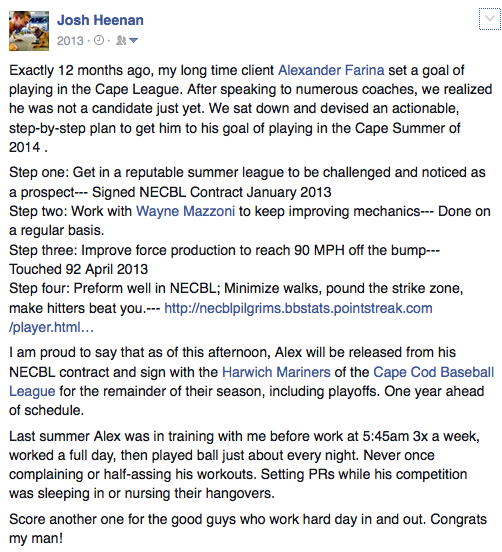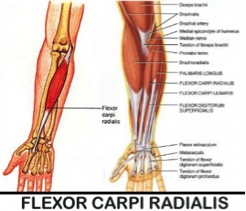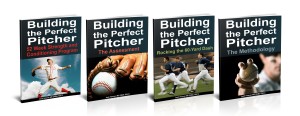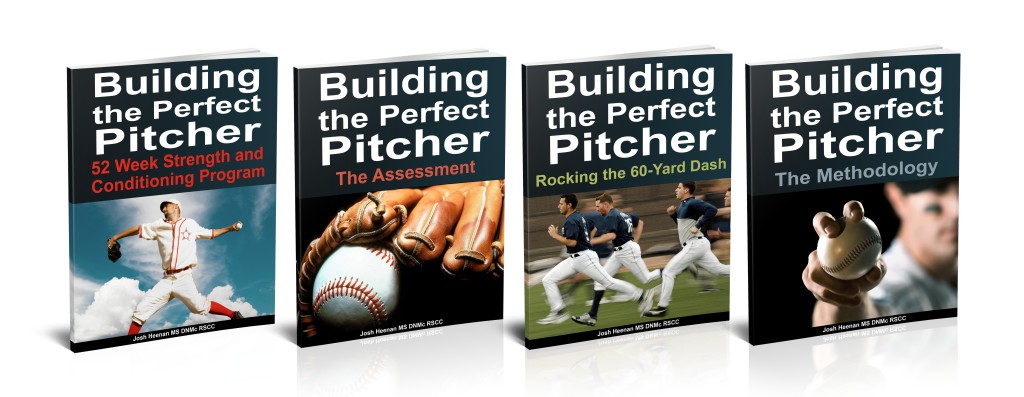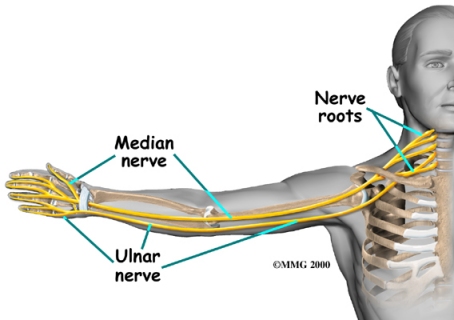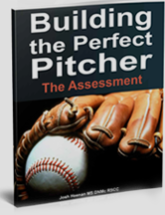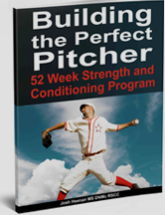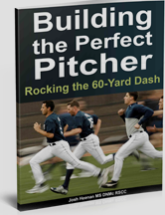12-Week Weight Gain Coaching For Baseball Players
12-weeks ago a group of readers started my private distance weight gain program. After an initial evaluation, movement screen, and goal setting we proceeded with both a training and nutritional plan for each athlete.
The groups average results were:
-20lbs of bodyweight gained
-100+ lbs added to their front squat
-125+ lbs added to their deadlift
-10+ reps added to their chin-ups
I couldn’t be more proud of these athletes (and families!) for making the short term sacrifice of eating a large amount of food and truly dedicating themselves to hard training.
Although we do have one problem
I promised the person with the most dramatic transformation to receive a full refund for their hard work. After much deliberation with my colleagues, we have not been able to determine a winner, so I am enlisting you, my readers to help choose a winner.
Please Vote Below– Voting Ends Friday February 5th at Midnight!
Brad
Today I weight 221, a total weight gain of 23lbs. I have been consistent with weight training throughout the entire 12 weeks. I was able to do a dead lift of 255 as of the end of my weight training. Before I started this training, the most I was attempting was 135. When I started I was doing about 4 or 5 chin ups, now I can do 12. Since baseball practice started I have gone out and am only throwing about 70% effort and my coach noticed I’m throwing harder than last year. When I was pitching I was able to get 8 batters out in 25 pitches at practice. The most important thing is that a college coach I’m talking to noticed the big change in my size since I went to their training camp in the summer and they asked me to throw a “tryout” bullpen at the college next week. Each week I followed your advice and I never had a hard time reaching the weight goals; I was usually ahead of schedule. My goal was to get to 220 and I reached that with 2 weeks to go to the end of the weight program.

Garrett
First off, thanks for making my money well spent whether or not Garrett wins the contest. I can tell a difference as well as many friends and family.
Though he didn’t meet the full expectations; we offer the following results:
Total weight gain – 139lb to 159lb
Squats – 135lb to 200lb
Chin-ups – 6 to 25
Pushups – 30 to 70
Dumbbell incline press – 30 lb to 60lb
these are all his working weights, not max outs. – Garrett’s Father
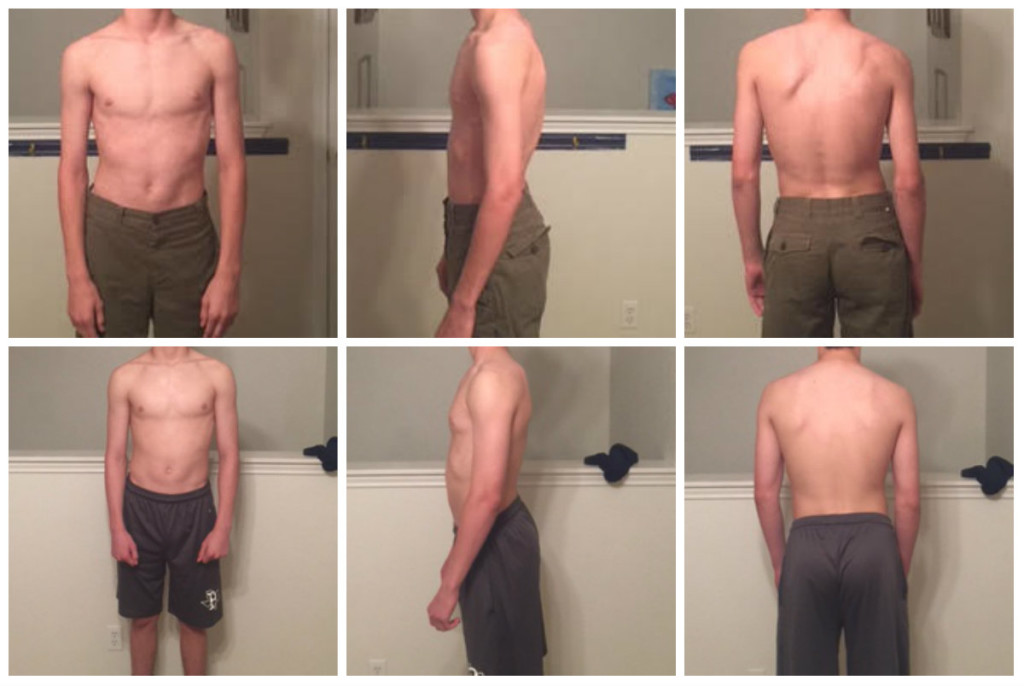
Keanu
My current weight is 171.8 after starting off on an even 148. Being up almost 24 lbs seems huge for 12-weeks worth of work. Strength wise I’ve been noticing major increases in each and every workout, but I haven’t been keeping track of how much exactly except in certain workouts like my rows being up 30 lbs and my deadlift going up 150+ lbs with a max that’s just shy of 200 lbs more than when I first started the program.
This whole experience has been very critical to me in not only playing baseball going forward, but in life because I always wanted to become a bigger person and weighing 150 on a good day wasn’t going to get me anywhere I wanted to go. I wish I could be gained more in this 3 month span, but I’ve learned a lot about how much I need to eat, on top of taking protein and creatine consistently. This definitely won’t be the end of my quest to gain muscle mass and I will without a doubt take what I have learned and incorporate it into my everyday life to become a stronger and better baseball player. Thank you for this opportunity, Josh.
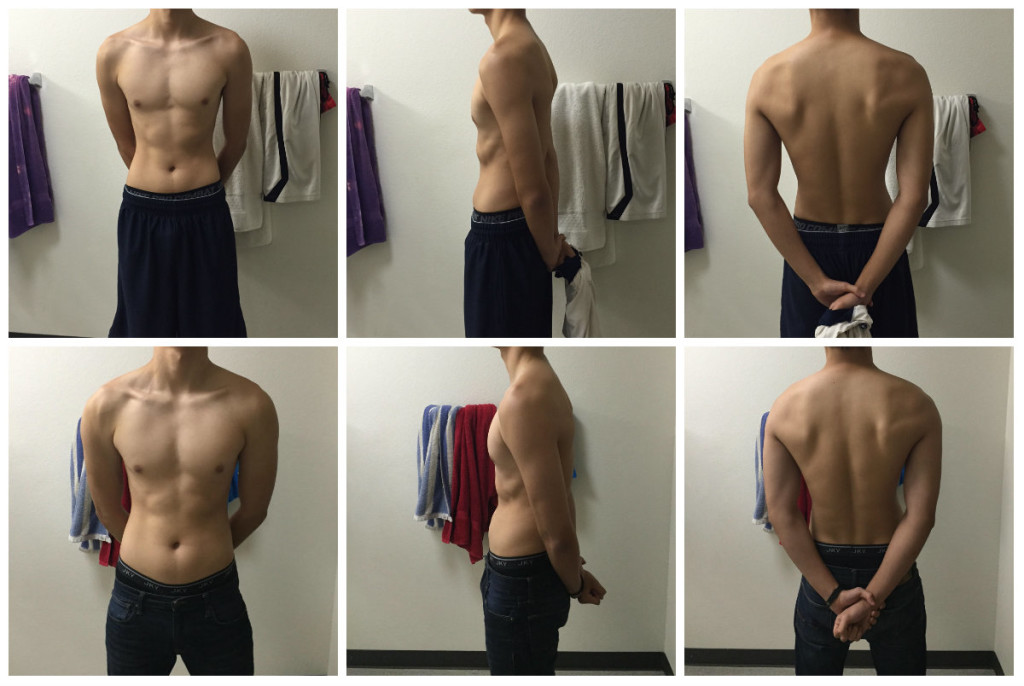
What Does A 100MPH Fastball Look Like In The Gym?
Throwing 100MPH is the goal of many baseball players, pitchers and position players alike. 100 MPH is a tremendous goal, but to be realistic, on average less than 10 MLB pitchers touch 100MPH per season. There is a reason why guys like Aroldis Chapman make 8 million a year.
So how do you create the ability to throw that hard?
Great arm mechanics? YEP
Shoulder-hip separation? YEP
Adequate stride length? YEP
There is no substitute for great arm mechanics and throwing with maximum intent, but many throwers have pretty good arm mechanics and throw with intent. The biggest difference I see with our extremely hard throwers (95+MPH) is they are BIGGER AND STRONGER than those who throw with less velocity.
A great example of this is one of our guys in the Brewers Organization, Alex Farina. Alex touched 95 with regularity in his first season of pro ball.
Returning from the season Alex was a solid 215lbs. Not bad for a 6-foot tall athlete, but we knew he had some growing to do and some strength to gain.
Fast forward 5 months
Alex has busted his butt both in the weight room and kitchen. As of February 1st, he will be a solid 240 lbs. That’s a solid 25lbs to his frame in less than 5 months. What’s just as impressive (AND IMPORTANT!) is that his strength gains have matched every new pound of bodyweight. Sure, he can now deadlift over 600lbs and perform strict chin-ups with 75lbs of external load… for reps… BUT the real impressive feat of strength and power for Alex is his reverse lunge. See below
Many professional athletes wish to posses a 335lb back squat, their dream back squat is what Alex puts on his back and lunges… for reps.
Technique and position are incredibly important to our programming as this prevents injuries and allows us to transfer strength gains to the on-field needs of the athlete.
Think the lunge position matters to throw hard?

WE DO!
So what is your next step today to throw harder?
Check out our on-site and remote programming services at http://www.advancedtherapyperformance.com/
5 Reasons Why You Can’t Gain Weight
Having coached hundreds both in person and as distance clients that routinely put on 20-30lbs in their first 12 weeks of training. I can vouch that many are dedicated to reaching their goals but often have 1-2 major faults that inhibit them from putting on the weight they desire.
Here are my top 5 reasons why people are unsuccessful in gaining weight
5- You are not training with intensity
It’s beyond the scope of this article to dictate if you are on the correct training program or not to gain weight, but regardless of the program, you need to be training with intensity.
Intense training will create the physiological effects that will signal your body to increase muscle mass. Just as important, a solid training program executed with intensity will help increase appetite and allow you to consume more calories over time.
Don’t go through the motions, Train your butt off.
4- You don’t prioritize sleep
Sleep is the time to recover and grow.
Many athletes stay up watching TV and playing video games until 2-4am. Leaving them only 4-6 hours to sleep. When you are able to get deep sleep, your body produces a hormone profile that is optimal for increasing muscle mass and dropping body fat.
For more tips on sleep check out my T-nation article 4 Sleep Strategies for Athletes’
3- You don’t meal prep
This one drives me absolutely nuts.
Without preparing your food in advance you are going to find it near impossible to get enough food in throughout the day. Unless you are a professional athlete, you have to contend with class and/or work on top of everyday life. Having a bunch of meals prepared and snacks always by your side is the easiest way to reach your goals.
I’ve had high school athletes hide PB&J in their backpacks and sneak them in during class or in between class.
I’ve had professional athletes prepare 10-20 meals prior to a long road trip where they know the only options will be McDonald’s for for dinner just about every night.
It doesn’t matter how you get it done, you need to consume enough nutrients for your body to grow. Make it easy on yourself and pack your meals.
2- You have the wrong mindset
Being a skinny kid gaining weight is uncomfortable. It requires preparation, extra time cooking, extra time cleaning, extra time eating, and food will get boring.
GET OVER IT
If it was easy EVERYONE would be their ideal bodyweight, throw 95MPH, and drop 500 foot bombs.
Having a task oriented mindset and understanding that being uncomfortable is a part of the process.

1- You do not have big enough consequences and a support team
I’m a big fan of S.M.A.R.T. goals.
Specific
Measurable
Achievable
Results-focused
Time-bound
Every weight gain athlete I’ve ever had in person or distance coached has implemented S.M.A.R.T. goals with weekly check-ins. These small weekly goals along with surrounding yourself with a team who has the experience and knowledge of how to add some serious weight in a short amount of time makes a world of difference. In our Southport facility, some of the best coaches we have are athletes who have previously gained 30-40 lbs in previous years talking to other athletes.
In regards to consequences, rarely does anyone ever fails to reach their goal when the stakes are high enough. In house, athletes often pick the punishment of eating a can of dog food if they miss a weekly goal. No wonder why no one misses goals.
Alex Farina Signs with Milwaukee Brewers
On August 2nd 2013, I made the following post on facebook:
As I mentioned in that post, Alex is the type of client that makes me look great. Simply put, my job is to keep our athletes healthy and progressing while providing guidance wherever needed. For an athlete like Alex who shows up early, stays late, listens, asks well thought out questions, is process oriented, and consistent– he will be successful no matter what he puts his mind to.
Alex spent the summer entering his junior year of college split between the New England Collegiate Baseball League and the Cape Cod Baseball League. Having MLB scouts show interest there was some talk of getting drafted junior year, but to be honest, coming from a program with 3 draft picks in the last 34 years, it was a long shot and not expected.
Eventually, the draft came and went without a call and he reported back to the NECBL for the summer. During that time we spoke openly about how the next 12 months were going to go. The primary goal was to graduate on time with his mechanical engineering degree and play affiliated pro-ball whether or not he was drafted.
Speeding up to present time, Alex earned his degree and got the call he was waiting for from the Brewers and as I write this he is on a plane to their Arizona Rookie Ball affiliate. A well-earned opportunity for someone who dedicated themselves to taking one step at a time, staying focused, and never excepting anything less than being better than yesterday. That is how big goals are accomplished and dreams are realized.

Add Muscle Mass, Get Recruited and Drafted
With the rigorous in-season schedule of games, practice, school, and life adding lean muscle mass can be very challenging. Add in distance running, hot weather, and a lack of training it can feel impossible to maintain bodyweight, let alone add some clean LBS to a wiry frame.
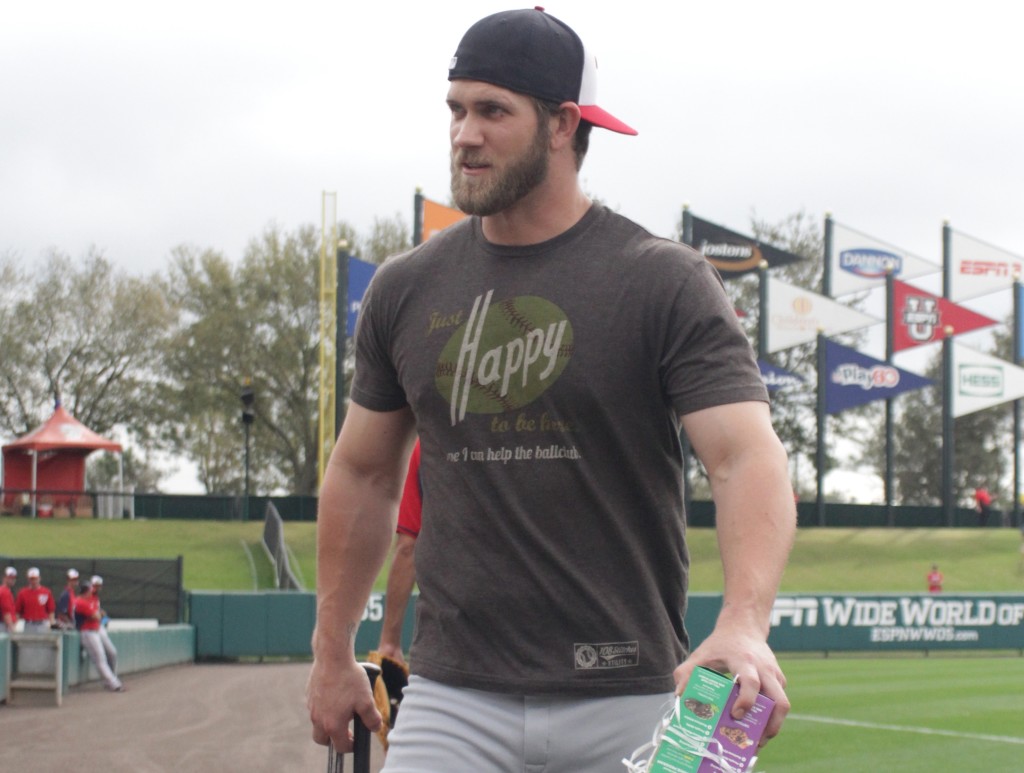
Why is muscle mass so important?
Muscle mass and increased bodyweight increases potential force output, which is one of the keys when trying to run faster and throw harder. Not only is added muscle mass important for injury prevention, but it terms of health and longevity there are few indicators better than muscle mass.
I held a webinar last year and release my “90 MPH Formula”. As you can see below, I’m a huge believer that strength gains and bodyweight are near necessity to throwing above 90. Mechanics and a whole host of factors play into this, but my athletes have shown me the information listed is accurate over and over again.
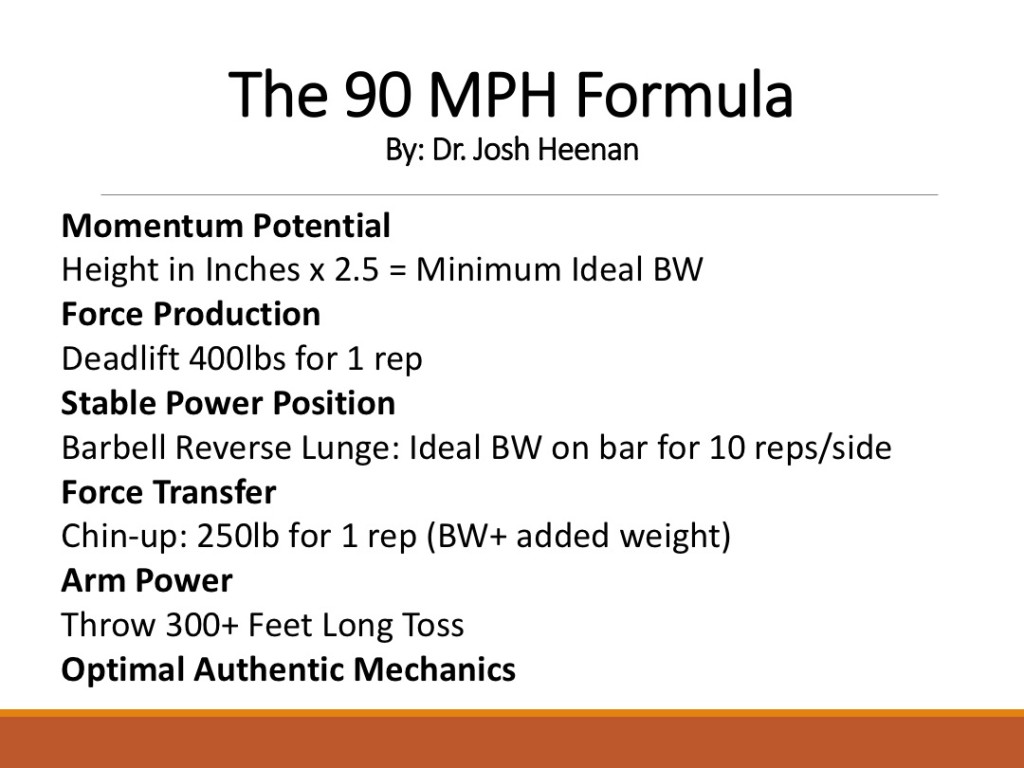
I encourage you to compare your favorite collegiate or MLB team roster to the “90 MPH Formula”.
The performance indicators and decreased risk of injury are great for athletes, but why else would this matter for collegiate coaches and MLB organizations?
Dedication/Toughness
For the most athletes, adding a significant amount of muscle mass requires intense dedication. Having seen 100+ athletes add 20 lbs in 10 weeks, I know this is not for the faint of heart. The ones who go on to add 30-40 lbs over a 6 month period have a level of need for the weight and self-discipline that is impressive to say the least. Dedication, toughness, and sacrifice for a larger goal (like significant muscle gain) is something all highly competitive teams want.
Projectable/Image
Baseball, like most sports, is highly speculative. As I tell our draft eligible guys, all it takes is one scout to fall in love with you and you will be picked up. Same holds true for college coaches. Being undersized by 30-50lbs while being scouted or recruited is going to portray a less than ideal image of what you can offer, even if you are an exceptional athlete. As one of my good friends often says “dress for the job you want, not the job you have” prior to your college visits or your draft eligibility it is important to present yourself physically prepared for that next level of play. Leverage your opportunity to have those coaches speculate you are the hardest worker they have ever met.
During the first day of the MLB draft coverage, the hosts continually commented about how a bunch of the athletes were “gym rats”. They classified these guys as “workers” and would be an asset to each ball club they were about to join. Many college and pro organizations see the value of athletes who train hard, are more durable, and reach their potentials. Take the time now to dedicate yourself to being consistent while training hard and smart year-round.
Predicting and Preventing UCL Injuries
Pitching coaches and researchers are pointing to mechanical flaws along with increased pitching velocities as the root cause of the large uptick in UCL tears. In the gym, we see a bunch of trends that have been correlated to UCL injuries either anecdotally or backed by research. The following are my top 3 red flags prior to a UCL injury from a thrower.
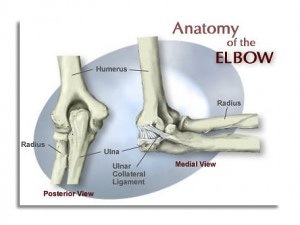
1. Cervical Rotation Dysfunction
Cervical rotation is depended on good joint mobility as well as enough flexibility from the muscles that attach to the neck and shoulder. What most people miss when evaluating or training rotational athletes is that core stability plays a huge role in cervical rotation.
The first video is of a left-handed pitcher supine with full right rotation in his neck.
The next video is of the same left-handed pitcher standing with limited right cervical rotation.
The inability to move properly through the neck while standing (especially in right cervical rotation) will lead to altered pitching mechanics. On the mound the result will often present as “flying open”. Pitchers with this type of dysfunction struggle with consistency of pitch location and velocity. They also tend to present with neck and shoulder pain prior to UCL damage.
One fix that we use with these athletes is half get-ups. Usually a few challenging with or without weight can correct this dysfunction long-term.
2. Tight Pitching Forearm
I have yet to find good literature on “forearm tightness” prior to UCL injury, but I can tell you from experience athletes who complain about forearm tightness on a regular basis that goes untreated often come back down the line with medial elbow pain, little leaguers elbow, or a UCL tear.
Studies have shown that the “flexor-pronator” muscles are used when throwing to create elbow stability.1 My suspicion is that where the body feels that it cannot control the violent valgus forces of the elbow during throwing, these forearm muscles (particularly the flexor carpi radialis) over-assist the passive restraints of the ulnar collateral ligament. This is a red flag that needs to be address immediately.
3. Lower Body Injury or “Balance Issues”
Fluid transfer of force from one joint to the next is the basis for great movement, injury prevention, and high performance. Ignoring foot, ankle, and knee injuries while jumping back into high level throwing is asking for trouble up the kinetic chain.
Garrison et. al compared baseball players who had no UCL tears vs. players who did. Each group completed the Y-Balance Test, a quantitate test to measure overall balance. Participants with a UCL tear demonstrated decreased performance for their stance and lead lower extremities during the Y-Balance Test. The researchers concluded that there is a potential link between impaired balance and UCL tears in high school and collegiate baseball players.
I put “balance” in quotations because I believe there is a wild miss understanding of what real balance issues are. True balance issues come from the vestibular system. Most of what we see with younger athletes is very poor strength and an inability to express strength or movement in a given range of motion. When someone says they have a balance issue when standing on one leg, I hand them 2 heavy dumbbells to hold next to their body and stand on one leg again. By holding the weight and crushing the dumbbells with their hands, they activate their hips and core musculature giving their body feedback to remain stable. If you try this little test and your single leg stance does not improve, you likely have some true underlying balance issues and should get that checked out. For the rest of you, you need to get stronger!
1. Park MC, Ahmad CS. Dynamic contributions of the flexor-pronator mass to elbow valgus stability. J Bone Jt Surg. 2004;86(10):2268-2274.
Want to play college baseball? This weekend, you must do this.
Watch College Baseball
The NCAA Regionals are played continuously from Friday to Sunday on ESPN U, ESPN 3, and the SEC Network. Can’t make it because you have games all weekend? DVR a few of the games and watch them Sunday night.
Take this yearly opportunity to learn about your potential competition. Analyze the physical attributes of each player, how they play the game, how fast they run, how hard they throw. So often I work with players who want to play college baseball, but have no idea what the talent pool is like at that level.

Check out the rosters of some of the known powerhouses. For instance, Texas has only 4 players listed under 180lbs. Of the 17 pitchers on their staff, Texas has only 1 that is under 180lbs, and he is a freshman. Weight is not the end all be all for baseball players, but it is absolutely one indicator of how well someone is built (assuming the athletes are lean). Adding muscle mass is one of the easiest ways to increase mph on the mound, decrease injury risk, and raise your overall athletic potential.
Why bodyweight is important for pitchers
The speed of the college game is often surprising for high school athletes, especially at the high echelon DI programs. In 2013, Perfect Game published this list of the fastest high school sophomores, juniors, and senior 60 yard dashes.
Averages: High School Senior 7.31 | Junior 7.44 | Sophomore 7.56
Top Performers – 60-Yard Dash – Class of 2014
| RK | Time | Name | Event | School | City | State |
| 1 | 6.28 | Carl Chester | National Showcase | Lake Brantley | Longwood | FL |
| 2 | 6.31 | Denz’l Chapman | National Showcase | Serra | Los Angeles | CA |
| 3 | 6.35 | Jared McKay | Southeast Top Prospect Showcase | Chamblee Charter | Stone Mountain | GA |
| 4 | 6.36 | Evan Holland | Mid Atlantic Top Prospect Showcase | Timber Creek | Erial | NJ |
| 5 | 6.37 | Jack Flaherty | National Showcase | Harvard-Westlake | Burbank | CA |
| 6 | 6.42 | Clay Lane | Sunshine South Showcase | Kaufman | Kaufman | TX |
| 7 | 6.43 | Michael Gettys | National Showcase | Gainesville | Gainesville | GA |
| 8 | 6.44 | Derek Hill | National Showcase | Elk Grove | Sacramento | CA |
| 9 | 6.45 | Connor Brady | South Top Prospect Showcase | Plano Sr. | Plano | TX |
| 10 | 6.46 | Matthew Collins | National Showcase | Memorial | Houston | TX |
| 10 | 6.46 | Trenton Kemp | National Showcase | Buchanan | Clovis | CA |
| 12 | 6.47 | Troy Stokes, Jr. | National Showcase | Calvert Hall College | Baltimore | MD |
| 12 | 6.47 | Stone Garrett | National Showcase | George Ranch | Sugar Land | TX |
| 14 | 6.48 | Tristan Rojas | Sunshine Northeast Showcase | James Monroe | Bronx | NY |
| 15 | 6.49 | Landon Morgan | South Top Prospect Showcase | Lubbock Christian | Levelland | TX |
| 15 | 6.49 | Giovanni Abreu | National Showcase | George Washington | New York | NY |
| 15 | 6.49 | Jeren Kendall | National Showcase | Holmen | Holmen | WI |
| 15 | 6.49 | Alexis Pantojas | Caribbean Top Prospect Showcase | Puerto Rico Baseball Academy | Vega Alta | PR |
Top Performers – 60-Yard Dash – Class of 2015
| RK | Time | Name | Event | School | City | State |
| 1 | 6.44 | Satchel McElroy | Jr National Showcase | Clear Creek | League City | TX |
| 2 | 6.45 | Demetrius McAtee | South Underclass Showcase | Parkway | Bossier City | LA |
| 3 | 6.46 | Alex Shaver | Jr National Showcase | George Ranch | Sugar Land | TX |
| 3 | 6.46 | Bakari Gayle | Jr National Showcase | Martin Luther King, Jr. | Stone Mountain | GA |
| 5 | 6.50 | Eric Cole | South Underclass Showcase | Southlake Carroll | Southlake | TX |
| 6 | 6.51 | Connor Smith | Ohio Valley Showcase | H.H. Dow | Midland | MI |
| 7 | 6.54 | Roman Millem | Ohio Valley Showcase | North Oldham | Prospect | KY |
| 7 | 6.54 | Jimmy Herron | Jr National Showcase | La Salle College | Harleysville | PA |
| 9 | 6.55 | Daniel Little | National Underclass Session 3 | Lexington Catholic | Nicholasville | KY |
| 10 | 6.57 | Demi Orimoloye | Jr National Showcase | St. Matthew | Orleans | ON |
| 10 | 6.57 | Bakari Gayle | Southeast Top Prospect Showcase | Martin Luther King, Jr. | Stone Mountain | GA |
| 12 | 6.59 | Tyler Williams | Jr National Showcase | Raymond S. Kellis | Peoria | AZ |
| 12 | 6.59 | Shane Selman | Sunshine South Showcase | Alfred M. Barbe | Lake Charles | LA |
Top Performers – 60-Yard Dash – Class of 2016
| RK | Time | Name | Event | School | City | State |
| 1 | 6.62 | Vincent Ramos | Caribbean Underclass Showcase | Colegio Bautista | Toa Baja, Levittown | PR |
| 2 | 6.64 | Nicholas Rowland | Mid Atlantic Underclass Showcase | Chestnut Hill Academy | Blue Bell | PA |
| 3 | 6.67 | Ryan Mejia | Sunshine East Showcase | Alonso | Tampa | FL |
| 4 | 6.72 | Matthew Meisner | Sunshine Northeast Showcase | Salem | Salem | NH |
| 5 | 6.78 | Christian Moya | California Underclass Showcase | Bishop Amat | Chino Hills | CA |
| 6 | 6.79 | Cameron Locklear | Atlantic Coast Underclass Showcase | Jack Britt | Fayetteville | NC |
| 7 | 6.82 | Tyrik Jones | Southeast Underclass Showcase | The Galloway | Stone Mountain | GA |
| 8 | 6.83 | Corbin Bice | Southeast Underclass Showcase | Chilton Co. | Clanton | AL |
| 9 | 6.83 | Aidan Elias | Ohio Valley Showcase | Sayre | Lexington | KY |
| 10 | 6.84 | Kace Massner | Midwest Underclass Showcase | Burlington Community | Burlington | IA |
| 11 | 6.85 | Isaac Collins | Midwest Underclass Showcase | Maple Grove | Maple Grove | MN |
| 11 | 6.85 | Austin Bodrato | Sunshine Northeast Showcase | St. Joseph Regional | Northvale | NJ |
| 11 | 6.85 | Ashton King | Atlantic Coast Underclass Showcase | Christiansburg | Christiansburg | VA |
Source: http://www.perfectgame.org/Articles/View.aspx?article=9177
As you can see, the average senior in high school ran a 7.3 60-yard dash, which is not overly impressive. That 7.3 average is largely made up of athletes who will never step foot on a college ball field. Of high school varsity baseball participants only 5.6% will play at the collegiate level.
Only 5.6% of high school baseball players ever make a college team. As a high school athlete, are you REALLY outworking the other 95%?
— Josh Heenan (@josh_heenan) May 25, 2015
What is impressive is the fastest sophomore ball players run between a 6.44 and 6.85. That is blazing fast for an underclassman. To even come close to breaking the top 15 for the senior class you must run under a 6.5, which is plus speed for an MLBer.
So how do you stack up?
Not sure how hard you throw? Get on the gun at your next outing.
Not sure how fast you run? Go to a track and video tape your 60 yard dash. Video does not lie, handheld timers do.
Be analytical with the games you are watching this weekend and see how you would compare against the competition and what aspects of your game need the most work.
Have questions or comments about playing at the next level? Leave a comment below.
Random Thoughts – Baseball Preseason Training
With spring sports about to formally start in a few weeks, emails have been pouring in. Here is a collection of thoughts from the past week.
Training has a very profound effect on an athlete’s performance
Unfortunately, like many things in life, it takes some time to get the ball rolling and reap the full benefits of training. Do we often see outstanding results in movement, strength, and performance in a short time? Absolutely. But if you think you are going to drop .2 sec off his 60 or 40-yard dash by next week’s showcase, you are missing the point of athletic development. Skill, speed, strength, and athletic development does not happen overnight; it’s a process.
Risk can be minimized
I am not a Basketball fan per se. I am however a huge fan of the qualities that a great basketball player has—hand eye coordination, great shin angles, speed, power, and endurance to name a few.
For baseball players, I can’t think of too many things with a higher risk-reward ratio than recreational/pick-up basketball. As my readers know, I am all for playing multiple sports, especially when younger, but the rate at which broken/sprained ankles, fingers, or wrists for kids “just trying to get some conditioning in” makes playing basketball not worth it unless you really love the game. With the short twenty-game New England high school baseball season, one good ankle sprain or jammed finger could mean missing half of your season.
In fact, after my 1st full season as Sacred Heart University’s Baseball Strength Coach, we forbid our players from playing basketball. Instead, I encouraged tag, dodgeball variations (not using dominant arm), and touch football.

Speed changes everything.
Rarely do you see a kid who consistently throws in the low 70s have arm pain.
Rarely do you see a kid who consistently runs an 8.0 60 yard dash pull their hamstring bad enough where they miss more than a week of their season.
Athletes and coaches need to understand how to progress throwing and speed work to mitigate short and long-term injuries. It is very difficult to have only 2-3 weeks of preseason with your team, as coaches need to make cuts and figure out whom the best players are.
Want a trick to incorporate speed and conditioning work without subjecting athletes to unneeded hamstring pulls?
Hill Sprints
Why hill sprints?
With the incline of the hill you are forcing your body into good acceleration positions, without subjecting yourself to the faster velocity required in flat ground sprints. The accelerated position also prevents over-striding and over-using the hamstrings to pull you forward (no heel landing). You want to be accelerating by pushing the ground behind you, instead of pulling you forward. So, hill sprints self corrects and teaches near optimal running mechanics without having to think about it. Hill sprints are also much more anaerobic in nature which is very applicable for baseball players. Especially the weaker, slower ones!
How do you implement this?
Week 1- Tryouts:
Start with your normal baseball skill work, but everyday at the end of practice find a steep hill and have players (pitchers included!) sprint for 20 seconds up the hill and walk back down. This can be a safe grassy hill or a pavement hill. Do 6-10 rounds of this with 2-5 minutes of recovery between sprints. Record where each player ends at the end of 20 seconds. Very quickly you will know who is “in good shape” and who is powerful and athletic. Not to mention you are avoiding god-awful distance running.
Week 2- Normal Practices:
M/W/F do 6-10 sets of 20 second hill sprints with near full recovery.
Tu/Th do 6-10 sets of 10-20 yard dashes on flat ground ~80% (full recovery in-between sets)
Week 3- Normal Practices:
M/W/F do 6-10 sets of 10-20 yard dashes on flat ground ~90% (full recovery in-between sets)
Tu/Th do 4-6 sets of 20 second hill sprints with near full recovery.
Obviously, if athletes were properly trained going into the season the coaches wouldn’t have to worry about this as much, but this is a safe way to protect the athletes and prepare them effectively.
Qualities Needed to Throw 90+MPH
If I am a 17-year-old, 165 lb pitcher, and can consistently throw 79-82 MPH for my fastball, if I get up to 200 lb with 12% or less body fat, should I be able to throw in mid 90s or at least the 90s?

Bodyweight has been directly correlated to fastball velocity.
Relationships between ball velocity and throwing mechanics in collegiate baseball pitchers
I touch upon this point here: “As a general rule of thumb, our Sacred Heart pitchers will gain 2-4 mph a season during their 4 years in college. As much as I would love to say it’s just training, there are numerous reasons why we get increased ball velocity each year including mechanical improvement, growth of body due to puberty, increased muscle mass, and improved body awareness/muscular coordination. The interesting trend is that most of our athletes tend to add anywhere from 5-15 lbs of bodyweight each year. Does 5-15lbs = 2-4mph on the mound? Maybe.”
Why All Baseball Players Should Be Using Creatine
With my pitchers, we have the following hierarchy/system:
1) Mechanics Rule All: Increase mechanical efficiency your energy leaks will decrease and velocity will go up.
2) Increase General Strength: Building a foundational base strength is not only performance enhancing, but done properly will decrease the risk of injury.
3) Increase Muscle Mass: More muscle mass, the more potential to apply force.
4) Increase General Force Production (e.g. Power): Allows us to tap into more high threshold motor-units to produce more force and increase IIx muscle fiber.
5) Increase Skill Specific Power: Explosive training in a transverse plane. This could be med ball throws, weighted or under-weighted ball throws, long toss, flat ground or even mound work.
We have had many mid 90MPH pitchers (injury free to boot) as well as some whom have touched 99+MPH. Some of these athletes have gained upwards of 50lbs of very clean weight (still viable abs) in less than a year. Everyone is different based on genetics, work ethic, movement capabilities, diet etc.
If you are mechanically efficient, have relatively long levers and can increase body mass to 200lbs and force production increase proportionally it is very possible. This information as well as programming for this goal is covered in detail in Building the Perfect Pitcher.
Should You Use Ice, Aleve, or Ibuprofen After You Throw?

Ice, Aleve, or Ibuprofen plays an integral role in most pitchers’ post-outing routines. But why?
When I evaluate a new client, parents often rave about their son’s “post-game ritual” of icing right away and popping two Aleve. When I ask why they are using ice and anti-inflammatories, they always give the same answer: to stop inflammation and help recover. Yikes! There are many problems with this routine.
Problem #1 – Pain
A pitcher should not have elbow or shoulder pain post game or the day after. Muscle soreness in the upper back, rotator cuff, and deltoid is normal after an intense outing, but pain is a big no-no.
Ice, Aleve, and Ibuprofen all have analgesic or pain relieving properties. So, if a pitcher is using these modalities on a regular basis, we have no idea how their body is actually responding to throwing because the pain is masked. Being in touch with how the body feels allows us to monitor injury risks factors such as mechanical flaws, excess volume in sport or training volume, and potential sickness that may be exacerbated by lack of recovery.
Problem #2 – Delayed Recovery
Every musculoskeletal injury goes through 3 stages of recovery:
-
Inflammation
-
Repair
-
Remodeling
The following video by Kelly Starrett discusses how reducing inflammation is the wrong approach for recovery. If pressed for time start watching at 4 minutes. Don’t get bogged down by the sciency nature of the information. This is a must watch for athletes, coaches, and parents.
Problem #3 – Ulnar Nerve
The Ulnar Nerve is often the source of pain for athletes and non-athletes alike. Much of this can be attributed to neck pathologies and poor posture, but one thing is for sure, if you throw ice directly on the elbow about half the athletes will say it makes them feel better and the other half say it’s the most painful thing they have ever experienced.
Ulnar Nerve Transposition surgeries are common when conservative treatments no longer work and the patient experiences continual radiating pain, or pins needles with hand weakness. This portion of the elbow can be very finicky and painful, thus why I see no need to place ice directly on the elbow post throwing.
Problem #4 – Gut Health and Ulcers
Gut bacteria play an essential role in a normal digestive tract. NSAIDS can damage the mucous coating that protects the lining of the stomach. Once these bacteria damage the stomach lining, powerful stomach acid may irritate or destroy portions of the stomach. This is where ulcers often form.
Stomach ulcers can lead to excessive gas, bloating, pain or more sever issues of bleeding ulcers and cancer.
So, some changes need to be made in the common post-game routine of pitchers. Instead of settling for the conventional use of Ice, Ibuprofen, or Aleve, pitchers should follow these steps to improve recovery time and arm health:
A New Post Throwing Routine
-
Restorative Movement/Increased Blood Flow Right After Outing-
Full Body Active Warm-up -
Restorative Nutrition-
PN Injury Guide -
Restorative Sleep-
7-10 Hours of Deep Sleep -
Restorative Movement/Increased Blood Flow Next Morning-
Full Body Active Warm-up
This model of recovery is what I recommend to our pitchers and athletes who feel they need to improve their recovery techniques post game.
Notes:
-Ice and NSAIDS are not inherently bad. Instead, their application is often incorrect, as they have more applicability in a post surgical setting.
-Pain and/or swelling after throwing is not normal and should be a huge red flag that something is not right. When pain or swelling is evident seek a medical professional to evaluate the issue. Common causes are overuse, poor pitching mechanics, or orthopedic/movement/strength limitations at the ankle, hip, spine, shoulder, or elbow.
Want to take the guess work out of your in-season and off-season programming?
Check out my customized year long training program Building the Perfect Pitcher.




